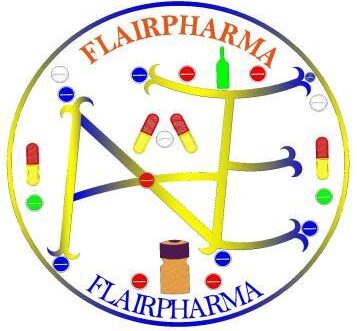The Pillars of GDP (Good Documentation Practices) form the strong foundation for ensuring data integrity, compliance, and quality in pharmaceutical documentation. To explain these pillars in a different and unique form, let’s imagine them as pillars of a majestic temple called the “Temple of Truth”, each holding up the structure of regulatory compliance.

Pillar 1: Attributable – The Signature Flame
🧭 Story:
As our journey begins, we see a fire burning in a brazier. It never flickers without a name. Every ember belongs to a guardian, clearly recorded.
🔍 Meaning:
Every entry must be linked to the person who made it. Initials, signatures, or electronic IDs must be present.
🛠 Example:
A sample test result in a lab notebook must show who performed it and when.
⚠ Risk of Omission:
Lack of accountability, confusion in investigations.

🌟 Pillar 2: Legible – The Crystal Scroll
🧭 Story:
You discover a scroll carved from crystal—brilliant and readable from any angle. No smudges, no ambiguity.
🔍 Meaning:
Documentation must be readable and understandable, even years later. Avoid messy handwriting or faded ink.
🛠 Example:
Use blue or black indelible ink. Avoid pencil. Write clearly.
⚠ Risk of Omission:
Misinterpretation, data loss, regulatory non-compliance.
🌟 Pillar 3: Contemporaneous – The Timekeeper’s Clock
🧭 Story:
An ancient pendulum ticks beside every record. It whispers: “Record what you do, when you do it.”
🔍 Meaning:
Information must be documented at the time the activity is performed, not before or after.
🛠 Example:
Sign and date a batch record immediately after completing each step.
⚠ Risk of Omission:
Backdating, false data, audit findings.
🌟 Pillar 4: Original – The First Stone Tablet
🧭 Story:
On a granite slab, the original truth is etched—not a copy, not a rumor. The slab is law.
🔍 Meaning:
Use the original record as primary evidence. If copies are made, they must be certified.
🛠 Example:
Keep original chromatograms or logbooks, not just scanned versions.
⚠ Risk of Omission:
Tampering, missing raw data, loss of credibility.
🌟 Pillar 5: Accurate – The Balanced Scales
🧭 Story:
Before a golden scale, scribes ensure their entries balance perfectly—no exaggerations, no errors.
🔍 Meaning:
Information must be truthful, precise, and free of errors.
🛠 Example:
Avoid overwriting. If you make a mistake, strike through, correct, sign, and date.
⚠ Risk of Omission:
Inaccurate reporting, product quality risks.
🌟 Pillar 6: Complete – The Whole Mosaic
🧭 Story:
You gaze upon a mural—every tile in place. A missing tile would ruin the image.
🔍 Meaning:
Records must be comprehensive, containing all required information.
🛠 Example:
Include start/stop times, raw data, calculations, observations, and sign-offs.
⚠ Risk of Omission:
Investigation failure, incomplete records, rejections.
🌟 Pillar 7: Consistent – The Harmonious Choir
🧭 Story:
Voices echo in harmony—no contradictions, no discord. Every note matches the last.
🔍 Meaning:
Entries should be uniform in format, sequence, terminology, and timing.
🛠 Example:
Use standard templates, formats, and abbreviations across all records.
⚠ Risk of Omission:
Data confusion, audit flags, miscommunication.

🌟 Pillar 8: Enduring – The Eternal Archive
🧭 Story:
Behind a sealed vault lie scrolls untouched by time—intact, legible, preserved.
🔍 Meaning:
Documentation must be stored in a durable, secure manner, safe from physical or digital decay.
🛠 Example:
Paper documents stored in fireproof cabinets; electronic records backed up and validated.
⚠ Risk of Omission:
Record loss, legal exposure, failure in recall situations.
🌟 Pillar 9: Available – The Open Door
🧭 Story:
The final chamber has no lock. When the need arises, records emerge with clarity.
🔍 Meaning:
Documentation must be readily retrievable during inspections, audits, or internal reviews.
🛠 Example:
Establish indexed archives and retrieval SOPs.
⚠ Risk of Omission:
Inspection delays, non-compliance, credibility loss.
🧾 Summary Table: The Nine Pillars of GDP Properties
| GDP Property | Symbolic Pillar | Key Principle | Common Practice |
|---|---|---|---|
| Attributable | Signature Flame | Every entry must be linked to its originator | Sign and date all actions |
| Legible | Crystal Scroll | Data must be readable and clear | Use clear handwriting or validated systems |
| Contemporaneous | Timekeeper’s Clock | Document events as they happen | Real-time recording |
| Original | First Stone Tablet | Maintain original data or certified true copies | Archive raw data securely |
| Accurate | Balanced Scales | Ensure truth and precision | Avoid overwrites; correct properly |
| Complete | Whole Mosaic | Nothing must be missing | Include all sections, times, and data |
| Consistent | Harmonious Choir | Standardize formats and methods | Use SOPs and templates |
| Enduring | Eternal Archive | Records must resist time and tampering | Secure, validated storage |
| Available | Open Door | Ready access for verification | Index and file documents methodically |
🎯 Final Thoughts: The Practice Beyond the Pillars
The Temple of GDP is not a myth—it’s the foundation of pharmaceutical quality. Each property plays a vital role in:
- Protecting patient safety
- Ensuring data integrity
- Facilitating investigations
- Enabling regulatory success
Treat each GDP property not as a box to check, but as a moral obligation to truth, quality, and transparency.
MCQ of GDP Good Documentation Practice


